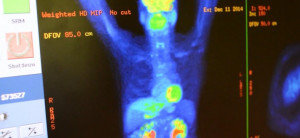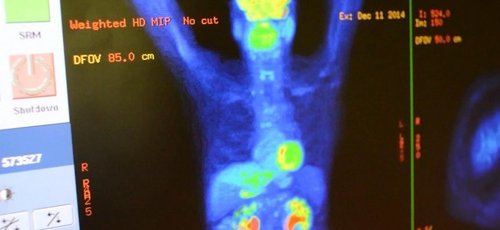Use of 18F-FDG in PET / CT in SUS
Research project completed.
Coordinator: Dr. Cezar Fritscher
Members: Carlos Barrios, PhD; Gustavo Werutsky, PhD; Mara Zanini, PhD; Eduardo Berdichevski, MSc; Vinicius da Silva, PhD; Leandro Fritscher, PhD; Bruno Hochhegger, PhD; Maria Teresa Tsukazan, PhD; Cristina Matushita, MD, MSc; José Pinto, PhD; Laura Voelcker, Raíra Maschmann, Louise Hartman, MSc.
Lung cancer is a disease of universal distribution, affecting both sexes, being among the leading causes of death on all continents. Currently, there are some therapeutic alternatives that depend, in principle, on the clinical and pathological stage of the disease, as well as on the expression of some biomarkers. Those patients with better TNM staging have, in principle, greater chances of survival and even cure. The development of techniques to improve the process of assessing the anatomical extent of cancer, or its staging, would positively impact better management within the Unified Health System (SUS) of patients with lung cancer.
Among the Nuclear Medicine technologies available are PET and SPECT, which require the administration of the radiopharmaceutical to the organism to be studied.
The performance of a PET / CT in the staging process of patients with lung cancer is capable of modifying up to 30% of the time the therapeutic approach to be proposed. Most of the time the change occurs in patients who have a surgical indication when staged by conventional methods, such as, for example, Computed Tomography. When evaluated by PET / CT, the exam can detect the disease in other places, both in the chest and outside it (metastases), which would contraindicate the surgical procedure, thus avoiding a surgery that would have no real benefit for that patient. < / p>
Researchers from InsCer, Hospital São Lucas and LACOG, are conducting studies in contrasted PET / CT, with the radiopharmaceutical 18 F-FDG, in the PET / CT protocol for lymph node staging.
>The performance of PET / CT exams can bring information of great use for the clinical management of patients with different pathologies, being able to modify the prognosis in several cases. This will make it possible to improve SUS patients' access to high-tech diagnostic techniques and contribute to increasing patient survival, which is one of the principles of cancer treatment.



